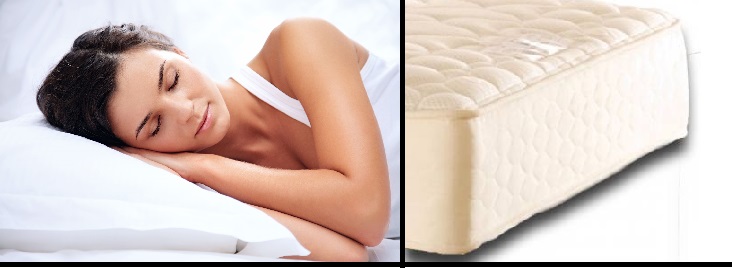Sales line (01507-611065) open : Monday - Friday, 9.30am - 5.15pm.
How to Improve Your Posture and Reduce Back Pain
Thousands of people suffer from back pain on a daily basis. While it's an infuriating and restrictive experience, there are some simple changes you can make to your lifestyle to offer back pain relief. This can be as easy as taking regular exercise, adjusting your posture, and investing in a good mattress that offers adequate back support.
Importance of Good Posture
It's vitally important to practice good posture as much as possible, as this can help to prevent back pain and problems. Keeping a good posture maintains the natural shape and curve of the spine, meaning less pressure is placed on it.
Posture is the alignment of the body and the force that gravity places on its joints, muscles and ligaments. Good posture allows the body to effectively distribute the gravitational force evenly and reduce the strain on overworked joints and muscles.
If your posture is poor, you can suffer a number of difficulties; some of which are quite surprising! As well as back pain and neck pain, you can also suffer from numbness in the hands and feet, and headaches. There can also be emotional symptoms caused by recurring pain and difficulty in movement.
How to Prevent Back Pain and Relieve Discomfort
Avoiding back pain and injury sometimes cannot be avoided, but there are some ways in which it can be relieved and even prevented.
- Exercise – If your back is hurting, it can be difficult to summon the desire to exercise. But it's actually a really beneficial way of easing pain and preventing further discomfort by strengthening the back's supporting muscles.
- Shoes – Ill fitting or tall shoes can also be a source of back issues. In particular, high heeled shoes can place a lot of extra pressure on the spine. Instead, it is best to go for flat footwear with cushioned soles as they are much friendlier to the spine.
- Avoid stress – Believe it or not, being stressed can make your back pain even worse. So try to ensure that you make time each day to relax and unwind, as this can help relieve any strains and help you avoid further back difficulties.
- Lifting and carrying – If your job involves lots of carrying and lifting, follow safety procedures that will help to reduce the stress on the spine. Similarly, follow good lifting and carrying practice if you need to move heavy items in your home.
These are all everyday tips that can be easily followed to offer back pain relief and prevent further strain. In addition, it's important to consider posture in relation to back pain.
Sitting Position
One of the most common sources of back pain is from a poor sitting posture. When seated, it's important to sit upright with your feet flat on the floor. The knees and hips should be level, and the chair should offer ample support to the back. A cushion or a rolled up towel can also be useful in reducing lower back pain by providing additional support.
For those who work in a seated position and use a computer, the keyboard should be placed at a comfortable distance to avoid unnecessary stretching and straining. It's also useful to take plenty of regular breaks to prevent back problems from developing or worsening.
Standing Position
Many people forget that posture is also important when standing, as well as when sitting or laying. A good standing posture would include keeping the feet about a hip distance apart, holding the head up and the hands down by the sides if the body, the abdomen pulled in, and the shoulders back and relaxed.

Sleeping in the correct posture is important for getting a good night's rest, and for reducing the chances of back pain and discomfort. Sealy Posturepedic mattresses (above, right) are popular for providing firmness which supports the back during sleep.
Sleeping Posture
Although it's a time when we switch off and wind down for the day, bedtime is another important time to pay attention to your posture. Sleeping in a bad position can lead to a variety of painful injuries, and back pain is commonly caused by poor sleeping posture.
The head should be supported with a pillow, but not in such fashion that it forces the neck up at too steep an angle. Sleeping on your side or back is usually best, and placing a spare pillow between your legs (if on your side) or under your knees (if on your back) can also improve your posture and maintain the spine's natural curves. Sleeping on your stomach is generally discouraged, as this position is not good for the spine's position and can cause back pain.
So, what is the best mattress for supporting the back and reducing pain? Usually, firm mattresses are most effective for improving posture and sleep quality in people who suffer from back issues, as these offer extra support. If you have an old mattress that has lost some of its firmness, it's probably time to replace it.
Have you considered your posture and how it affects your back? If you're suffering from back problems and sleep is an issue, consider investing in a new mattress to offer further support. Feel free to contact us for advice on choosing the right mattress.



















